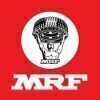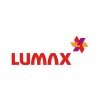Filter interviews by
Rane Brake Lining Junior Design Engineer Interview Questions and Answers
Rane Brake Lining Junior Design Engineer Interview Experiences
1 interview found
I applied via Walk-in and was interviewed before Aug 2022. There were 3 interview rounds.

Very tuff and difficult, they are providing a 2 dimension view
(2 Questions)
- Q1. What is geometric tolerance ?
- Ans.
Geometric tolerance is a set of symbols used to define the allowable variations in form, size, and orientation of features on a part.
Geometric tolerance ensures that parts are manufactured within specified limits to ensure proper fit and function.
It includes symbols such as concentricity, perpendicularity, parallelism, and flatness to communicate the required tolerances.
For example, a drawing may specify a hole diamete...
- Q2. What are the input need for design?
- Ans.
Inputs needed for design include requirements, constraints, user needs, budget, timeline, materials, and feedback.
Requirements from stakeholders
Constraints such as budget and timeline
User needs and preferences
Materials and resources available
Feedback from testing and iterations
Interview Preparation Tips
Skills evaluated in this interview
Top trending discussions






Interview questions from similar companies

I applied via Naukri.com and was interviewed in Dec 2020. There were 3 interview rounds.
Interview Questionnaire
1 Question
- Q1. Core Java, J2EE
Interview Preparation Tips

I applied via Walk-in and was interviewed before Feb 2021. There were 2 interview rounds.

(2 Questions)
- Q1. Depends on experience
- Q2. Related to systematic approach
- Ans. Problem solving tools, OEE, FPY, Root cause analysis. 14Q, 5S
Interview Preparation Tips

Senior Engineer Interview Questions & Answers
Samvardhana Motherson Groupposted on 19 Jan 2021
I appeared for an interview in Jul 2020.
Interview Questionnaire
1 Question
- Q1. Waht is your achievements
- Ans.
I have achieved several milestones throughout my career as a Senior Engineer.
Successfully led a team of engineers to develop and implement a new software system, resulting in a 20% increase in efficiency.
Received recognition for designing and implementing a cost-effective solution that reduced production downtime by 30%.
Contributed to the development of a groundbreaking technology that revolutionized the industry, lead...
Interview Preparation Tips

Senior Engineer Interview Questions & Answers
Tata AutoComp Systemsposted on 9 Nov 2024
I applied via Approached by Company and was interviewed in Oct 2024. There was 1 interview round.
(2 Questions)
- Q1. Scm role and responsibilities
- Q2. Earlier experience and roles

Senior Engineer Interview Questions & Answers
Tata AutoComp Systemsposted on 14 Nov 2024
(2 Questions)
- Q1. What is cycle time?
- Ans.
Cycle time is the total time taken to complete a process or task from start to finish.
Cycle time is a key metric in process improvement and efficiency analysis.
It helps in identifying bottlenecks and areas for improvement in a process.
For example, in manufacturing, cycle time can refer to the time taken to produce one unit of a product.
Reducing cycle time can lead to increased productivity and cost savings.
- Q2. What is line balancing
- Ans.
Line balancing is the process of assigning tasks to workstations in a way that evens out the workload and maximizes efficiency.
Involves distributing work evenly among workstations
Helps in reducing idle time and bottlenecks
Improves productivity and efficiency
Example: In a manufacturing plant, line balancing ensures each workstation has a similar amount of work to do


(3 Questions)
- Q1. How are you ?
- Q2. Where do you live
- Q3. How mch experiance you have
- Ans.
I have 8 years of experience in the field of engineering.
I have worked in various engineering roles for 8 years
I have experience in project management, design, and implementation
I have successfully completed multiple engineering projects
I have received positive feedback and recognition for my work
Interview Preparation Tips

I applied via Approached by Company
(1 Question)
- Q1. About lithium ion battery
Interview Preparation Tips

I applied via Recruitment Consultant and was interviewed in May 2021. There were 3 interview rounds.
Interview Questionnaire
4 Questions
- Q1. What will you do when carbide form after carburizing?
- Ans.
Carbide formation after carburizing can lead to brittleness and reduced strength. Proper heat treatment and tempering can help prevent this issue.
Perform proper heat treatment and tempering to prevent carbide formation
Adjust carburizing parameters to avoid excessive carbon diffusion
Use a different carburizing method, such as gas carburizing instead of pack carburizing
Consider using a different material with better resi...
- Q2. What do you know about reference air and purged air?
- Ans.
Reference air is a gas used as a reference point for measuring gas concentrations, while purged air is used to remove contaminants from a system.
Reference air is typically a gas with a known and stable concentration of a particular substance, used as a baseline for comparison with other gases.
Purged air is used to remove contaminants from a system or environment, such as in a laboratory or industrial setting.
Purged air...
- Q3. What is difference between Carbide, Ferrite and RA?
- Ans.
Carbide, Ferrite and RA are different types of materials used in engineering.
Carbide is a compound of carbon and a metal, commonly used in cutting tools.
Ferrite is a magnetic iron compound, used in electrical components.
RA stands for 'roughness average' and is a measure of surface roughness.
Carbide and Ferrite are materials, while RA is a measurement.
Each material has unique properties and uses in engineering applicati
- Q4. What is brazing Process?
- Ans.
Brazing is a metal-joining process in which two or more metal items are joined together by melting and flowing a filler metal into the joint.
Brazing uses a filler metal with a lower melting point than the base metals being joined.
The filler metal is heated to its melting point and then flows into the joint by capillary action.
Brazing is commonly used in HVAC, automotive, and aerospace industries.
Brazing can be done wit...
Interview Preparation Tips

(2 Questions)
- Q1. Educational background
- Q2. Work experience
(2 Questions)
- Q1. Core tools and analytics skill
- Q2. Challenges and weakness
Interview Preparation Tips
Rane Brake Lining Interview FAQs
Tell us how to improve this page.
Rane Brake Lining Interviews By Designations
- Rane Brake Lining Maintenance Engineer Interview Questions
- Rane Brake Lining Engineer Interview Questions
- Rane Brake Lining Production Supervisor Interview Questions
- Rane Brake Lining HR Executive Interview Questions
- Rane Brake Lining Senior Engineer Interview Questions
- Rane Brake Lining Area Sales Officer Interview Questions
- Rane Brake Lining Safety Officer Interview Questions
- Rane Brake Lining Executive Accountant Interview Questions
- Show more
Interview Questions for Popular Designations
- Junior Engineer Interview Questions
- Junior Software Developer Interview Questions
- Junior Executive Interview Questions
- Junior Software Engineer Interview Questions
- Junior Officer Interview Questions
- Junior Engineer Civil Interview Questions
- Junior Structural Engineer Interview Questions
- Junior Accountant Interview Questions
- Show more
Rane Brake Lining Junior Design Engineer Interview Process
based on 1 interview
Interview experience
Interview Questions from Similar Companies
Rane Brake Lining Junior Design Engineer Reviews and Ratings
based on 1 review
Rating in categories
|
Senior Engineer
71
salaries
| ₹3 L/yr - ₹7 L/yr |
|
Assistant Manager
57
salaries
| ₹5.3 L/yr - ₹9.5 L/yr |
|
Deputy Manager
42
salaries
| ₹6 L/yr - ₹11.8 L/yr |
|
Engineer
22
salaries
| ₹2.4 L/yr - ₹4.5 L/yr |
|
Production Supervisor
19
salaries
| ₹0.9 L/yr - ₹3.9 L/yr |

Bosch

Samvardhana Motherson Group

MRF Tyres

Ceat Tyres
- Home >
- Interviews >
- Rane Brake Lining Interview Questions >
- Rane Brake Lining Junior Design Engineer Interview Questions












